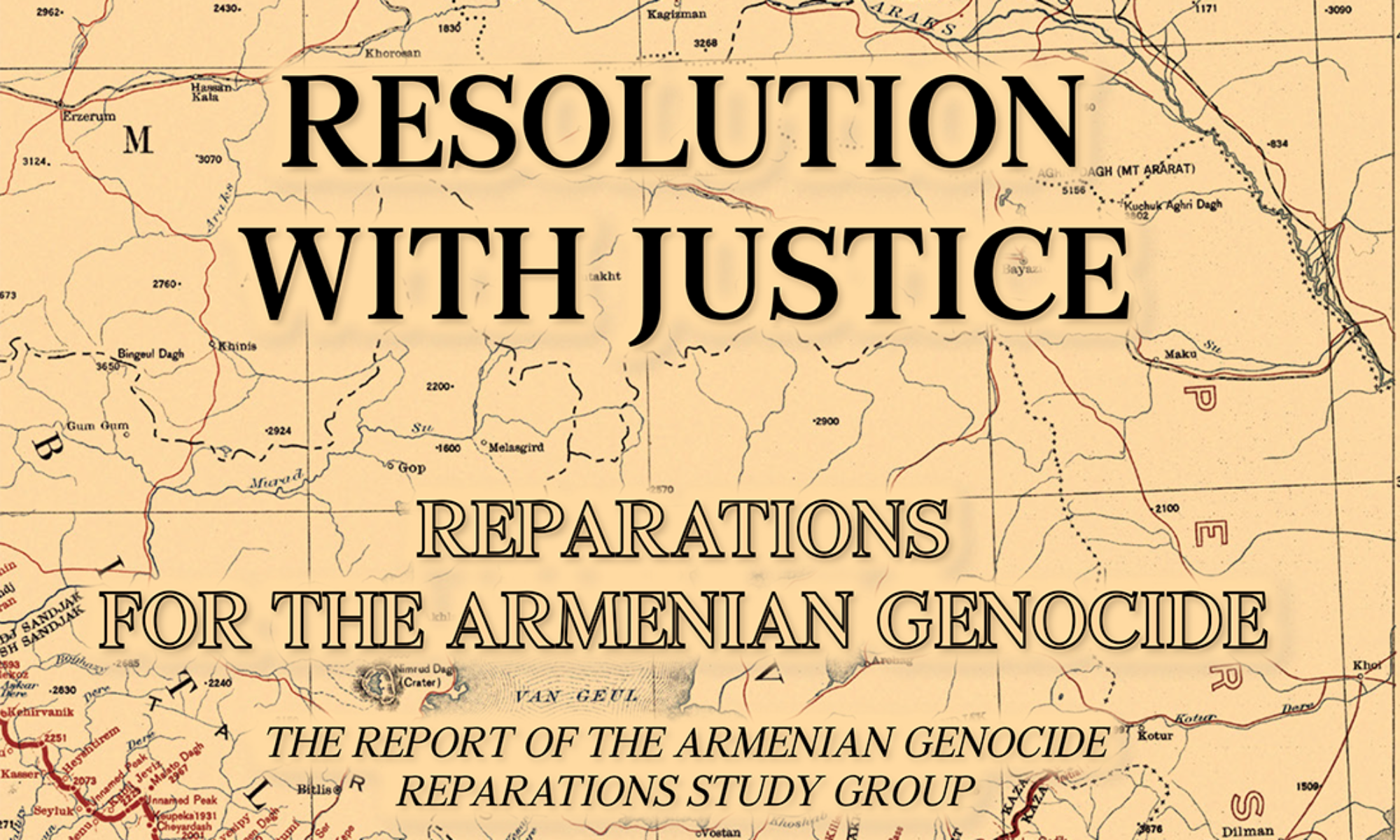
BRUSSELS, Belgium (A.W.) – On Dec. 6, the Armenian Catholicosate of Cilicia officially filed the application to reclaim the historical headquarters of the Holy See of the Great House of Cilicia from Turkey to the European Court of Human Rights (ECHR).
Following its submission, a press conference took place, which featured European Armenian Federation for Justice and Democracy (EAFJD) President Kaspar Karampetian, Representative of Catholicos Aram I Archbishop Kegham Khatcherian, professor of international law Nora Bayrakdarian, Catholicosate team coordinator and adjunct professor of religion and ethics Teny Pirri-Simonian, and international lawyer and professor at McGill University Payam Akhavan.
After Archbishop Khatcherian conveyed the message of Catholicos Aram I, Akhavan discussed the importance of the claim and how the case was about the property rights of the church and the right of religious worship. “[The case] entails the right of the church to restore ownership, possession, use, and restoration of the monastery for the purposes of religious worship,” Akhavan said in his address.
Pakhavan said that the case was inspired by the 2011 conciliatory remarks made by the Turkish government, which invited religious minorities to return to Turkey. These comments encouraged Aram I to send a letter in 2011 and 2013 demanding to return the estates of the Sis Catholicosate, however the letters remained unanswered.
A case was then filed at the Constitutional Court of Turkey, however, the court decided not to proceed with the case and banned the church from having access to property records. Pakhavan explained how the current status of the property was just a pile of rubble, but if given under the right ownership, could become a cultural attraction and a center for religious worship in the Middle East. “Anticipation will take several months. We have waited 100 years, and are willing to wait several months more for justice,” said Pakhavan.
Meanwhile, Dr. Pirri-Simonian addressed two significant attributions of the case, which included its value of promoting multiculturalism and inter-religious dialogue in the Middle East and encouraging Islamized Armenians to come forward and reveal who they are.
Following the remarks by the distinguished speakers, a variety of questions were asked regarding the precedence the case can set for other minorities; whether this will contribute to the political game between the European Union and Turkey; and if the counsel was prepared to accept a ruling from the court that did not fully comply with their expectations.
Pakhavan said that given their arguments, he would be very surprised if the court denied the right to the possession and use of the property. “The main claim is property rights under Article 1 of Protocol 1 to the European Convention and the supplementary claim is to the right of religious worship… I would be very surprised if the European Court of Human Rights would say that we are going to deny the right of the Christian minority, which has specific rights under the Lausanne treaty to go to a place of worship,” said Pakhavan.
Several other factors, including the current election going on for a Patriarchate in Istanbul, details into property rights, and the lasting impact it could have in the Middle East were discussed as well.
* * *
On December 6, the Catholicosate of the Great House of Cilicia filed a suit at the European Court of Human Rights demanding the return of the Catholicosate in Sis (present-day Kozan) from the Republic of Turkey, according to the website of the Catholicosate of the Great House of Cilicia.
Previously, the Catholicosate had applied to the Constitutional Court of Turkey on April 28, 2015, requesting the return of its religious headquarters in Sis. This lawsuit was prepared by a committee of Turkish and international human rights lawyers presided over by Catholicos Aram I of Cilicia.
The Catholicosate had scheduled a press conference in Brussels, Belgium for Wednesday, December 7.
The Catholicosate of Cilicia established its headquarters in Sis in 1295, but its clergy were forced to leave in 1915 during the Armenian Genocide. Though they returned after World War I during the period of French occupation, they again fled, together with all Armenians in the district, in June 1920 with French forces retreating as the result of an armistice between the French and the Turkish Nationalist authorities. By 1930, the Catholicosate had relocated to Antelias, Lebanon.
Dickran Khodanian for The Armenian Weekly
The Armenian Mirror Spectator
